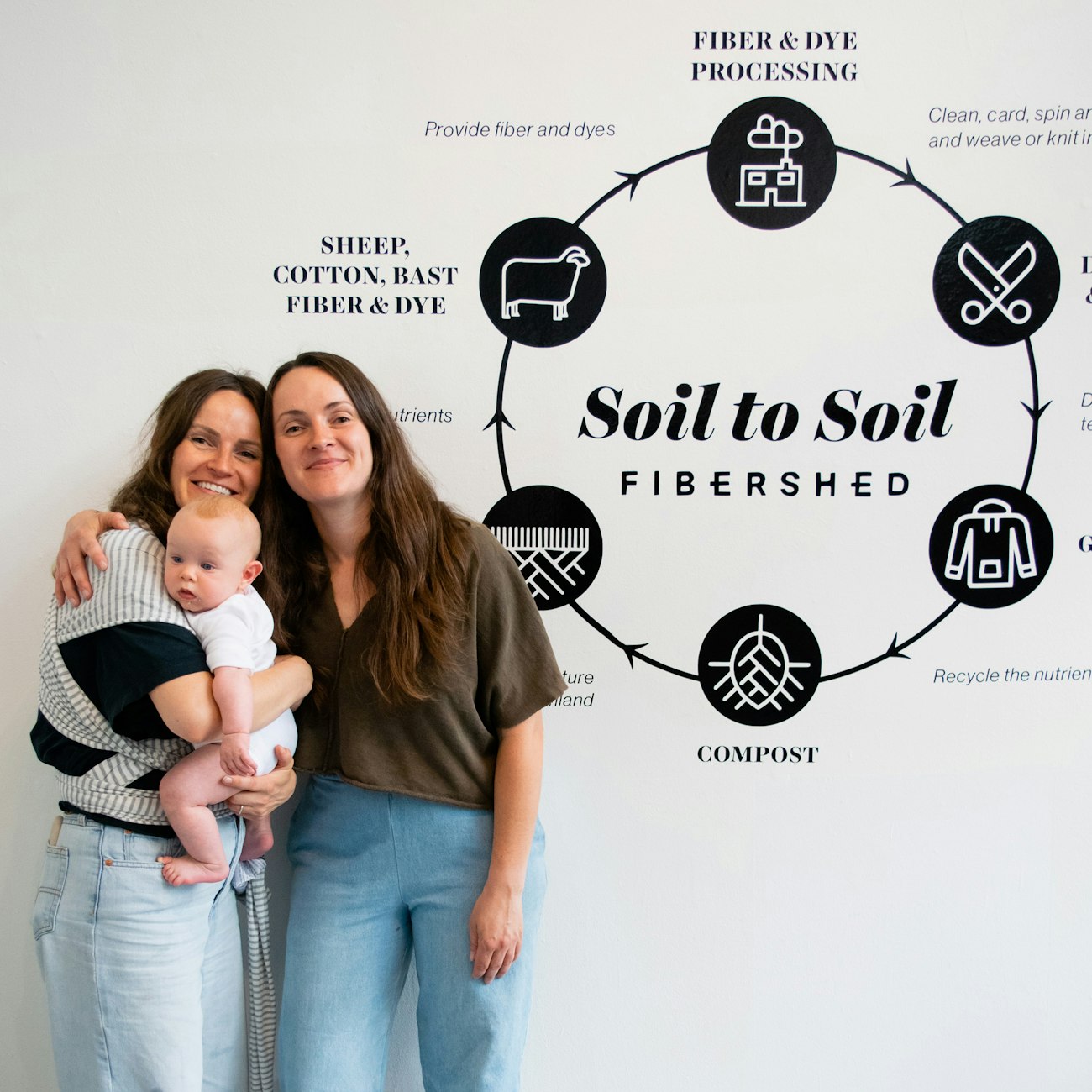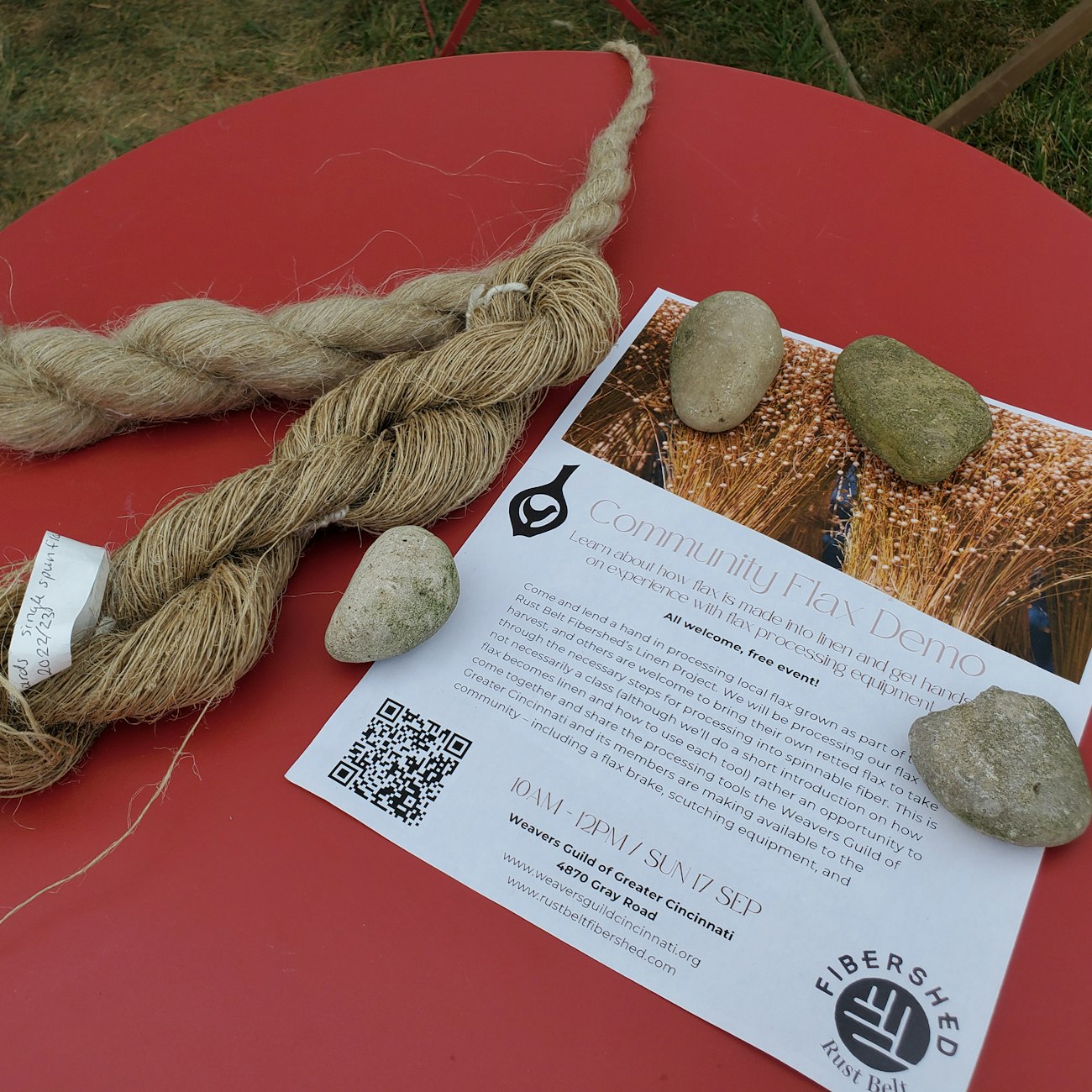Knitters come in all shapes and sizes. They also come from big cities and the farthest reaches of the rural. Yet within that diversity, there are elements of commonality that bring people together when it means a better world, a cleaner world. One way for knitters to reach out, recycle, and help renew is to explore the Rust Belt Fibershed, located in Cleveland, Ohio.
The Rust Belt Fibershed (RBF) was founded by expert natural dyers Jessalyn “Jess” Boeke and Sarah Pottle in 2017. It is a Fibershed Affiliate that provides community and educational programs for those seeking locally produced fibers and other textile products from the Midwest and Great Lakes region of the United States. They focus on local dyes, local fiber, and local labor, with a critical emphasis on education from the producer to the consumer. They also work with investors to share the vision of a regional economy centered around local fiber. Soil, water, and air conservation are high priorities—they seek to assist fiber-producing farmers with healthy farming practices that emphasize carbon sequestration and implantation.
The name Rust Belt Fibershed was inspired by the industrial history of the Cleveland area, where steel production flourished and made up the core of the economic prosperity. Over time, the area felt the effects of the decline of that industry. In seeking to revive lost skills such as flax growing and processing, the Fibershed has chosen a name that also evokes the positive traits of the Steel Belt: productivity and pride in quality work.
Jess articulates the RBF mission succinctly: “This is not about industrial or large-scale production. The Rust Belt Fibershed is all about creating a community and connecting people to where their clothes come from and where textiles come from. Getting people to ask questions about the source and realities of these materials. You have wool, you have flax, but you also have a farmer behind it, and life in the soil that the farmer works. You start telling those stories and people start to care more about the entire supply chain, instead of just taking it for granted. We want to create community around cultivating care, thinking about where our stuff comes from on the earth.”
 Jess Boeke and Sarah Pottle cofounded Rust Belt Fibershed in 2017. Photo by Corinne Wiseman, courtesy of Rust Belt Fibershed
Jess Boeke and Sarah Pottle cofounded Rust Belt Fibershed in 2017. Photo by Corinne Wiseman, courtesy of Rust Belt Fibershed
Visionary RBF Programs
The RBF vision seeks to make room for everything that can thrive in the RBF region: alpaca, wool, and cellulose fibers such as linen. Two of the most popular programs hosted by the RBF are the Rust Belt One Year, One Outfit project and the Rust Belt Linen project.
One Year, One Outfit
The One Year, One Outfit project was inspired by the founder of the original Fibershed, Rebecca Burgess, who started the Fibershed movement by trying to create an outfit from fibers sourced within 150 miles of her home. The RBF One Year, One Outfit project mirrors the concept by asking participants to source all the components of their own outfits from fiber growers within 250 miles of Cleveland, Ohio. To make it accessible to all, participation is free. The materials cost money, but RBF offers a few scholarships for those in need. These scholarships give creatives a chance to discover the beauty and sustainability of locally produced textiles.
Rust Belt Linen Project
The Rust Belt Linen project was influenced by the flax growing efforts of Chico Flax, Fibrevolution, and the North American Linen Association. The region boasts a lot of alpaca and wool, but RBF wanted to include some cellulose fibers. They first looked at growing cotton but found it would not grow well in cold climates. Once they realized that flax could be successfully grown in the Great Lakes region, flax became the go-to plant-based fiber. It started out as the Cleveland Flax Project, and about six years ago, it evolved into the Rust Belt Linen Project. It is a community project that anyone can be part of by growing a small plot of flax. Participants are taught how to grow, harvest, and prepare flax to process it into linen. The project does not currently produce yarn, but some of the participants have made linen yarn.
Flax is an amazing plant, and it makes an even more amazing product, linen. Flax is an easy-to-grow cold-weather crop that can be sown early. It is broadcast seeded (thrown by hand in random directions), so it does not grow in rows. It has a shallow root structure and does not need irrigation. Linen, which is yarn or fabric made from flax, is antimicrobial and makes an heirloom-quality fabric, meaning it improves with age. Linen encapsulates a value that the RBF seeks to promote: a high-quality garment or textile that can stand the test of time, which ultimately reduces waste.

The Rust Belt Linen Project focuses on growing flax and educating the community. Even many fiber enthusiasts are unaware that there is currently no commercial linen production in the United States. Photo by Jacqueline Harp
Jess has long been a fan of the natural when it comes to dyes and fibers, so she naturally gravitates towards linen. “I am a textile artist by way of natural dyes,” she says. “I have been working with natural dyes since 2009. I like to sew with linen and design with it. Linen is a challenge to dye, but I love it in that way. It does not take up dye easily when it is new . . . older linen pieces dye far more beautifully than newer pieces. That’s also a cool thing to think about: as linen ages, it becomes more malleable and softer. At the beginning, it has its own stubborn personality.” “The beauty of linen is that the yarn improves with age,” Jess observes. “A knitter can unravel a linen garment and find that the yarn is still very useable.”
Supporting Rust Belt Fiber, Farms & Fashion
“Knitters are a community that can make a difference,” says Jess. “No matter where you are located, you can be a part of a fibershed. Repairing, unraveling, and remaking an old sweater to make new garments—that’s all a part of it, too.
To become part of the effort to revive flax and linen, connect with local producers through your local yarn shop or find those producers directly. While no local infrastructure yet exists to make a large amount of local linen yarns, the RBF is working to solve that lack of capacity. As a knitter who may wish to expand and multiply your ability to positively impact the world, you can join with a group like the RBF to actively encourage the responsible production of beautiful fibers such as linen.
Jacqueline Harp is a freelance writer and multimedia fiber artist who spins, felts, weaves, crochets, and knits in every spare moment possible. She is also a former certified Master Sorter of Wool Fibers through the State University of New York (Cobleskill) Sorter-Grader-Classer (SGC) Program. Her Instagram handle is @foreverfiberarts.

